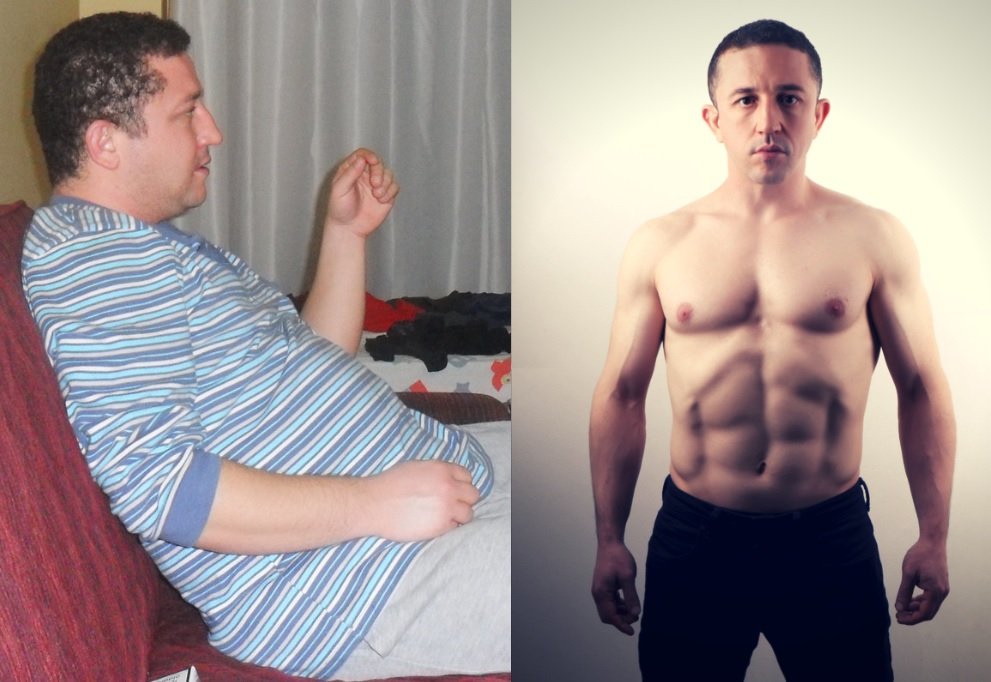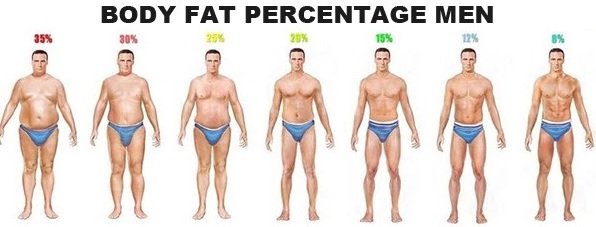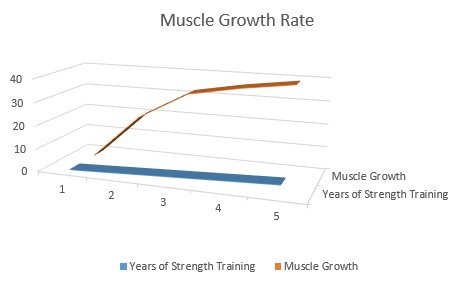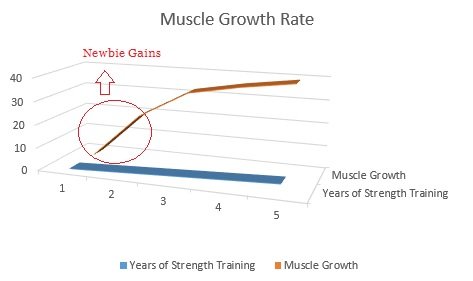
You’ll get six-pack abs when you have the following two at the same time :
- Big ab muscles
- 8-10% of body fat
Big ab muscles are built by strength training and 8-10% body fat by dieting.
The fastest way to get a six-pack is to build muscle and burn fat at the same time. This is easier said than done but it’s perfectly possible if you know what you are doing.
Follow the 6 steps below and you’ll get six pack abs fast:
1. Cut out the bullshit and focus on the essentials
You want results and you want them fast, so it’s in your best interests to cut out the bullshit and focus on the essentials. You don’t want to goof around by paying attention to things that hardly matter.
Most people get lost in the details and end up quitting long before they achieve their goals. When things get complicated, procrastination starts to rear its ugly head.
Here are a few things that don’t matter for reaching your goal of getting six-pack abs:
- What’s the best time of the day to train? Morning, noon, or the evening?
- Does skipping breakfast derail my diet?
- Will I gain weight if I eat at night?
- What should I eat pre-workout?
- What should I eat post-workout?
- Can I lose weight faster if I drink green tea?
- Can I lose weight faster if I use the stairs instead of the elevator?
- Should I buy protein powder?
- What type of protein powder is the best? Casein or whey?
- What supplements should I use?
- Which isolation exercises are the best for my abs?
- Should I eat brown rice or white rice?
None of these have a significant impact on getting abs. On the contrary, they are counter-productive.
For example, believing that you should eat your pre-workout meal is a great way to procrastinate with your training. What if you worked overtime and you don’t have enough time to eat your pre-workout meal? What if you don’t have enough money to buy supplements? All the items in the above list have the potential to evolve into excuses for procrastinating, or worse, quitting. Just forget about them and only do what matters. This will save you enormous time and willpower that should be spared for the things that actually matter in your quest to get abs.
There’s no need to complicate things. You want to build muscle and burn fat. That’s all.
For building muscle; follow a simple training routine that focuses on compound movements. Compound movements for weightlifting are deadlift, squat, and presses. For bodyweight training, they are burpees, push-ups, bodyweight squats, and pull-ups. These exercises are enough to train 80% of the muscles in your body. Add a few supporting exercises for the remaining muscles and you have all the exercises you need to build a great physique.
For a fat-burning and muscle-building diet; eat your animal protein first, add some fat and carbs, make sure that you eat slightly fewer calories than you burn.
This strategy is consistent with the Pareto Principle1 which famously states that 80% of your results come from 20% of your efforts. When you keep it simple, you are more likely to reach your goals and less likely to quit prematurely. If you want to achieve anything significant then keeping it simple is always the way to go.
2. Train 4 times a week with compound strength training exercises
The fastest way to build muscle is by doing compound exercises. Compound exercises give you the most bang for your buck because they train multiple muscle groups at the same time. Singling out a muscle group is an inferior strategy to build muscle because your body loves to function as a whole unit.
I built my six abs with compound bodyweight exercises. Here’s the list of all the bodyweight exercises I did and the muscle groups they work:
- Burpee (abs, triceps, obliques, shoulders, chest, quads, glutes, hamstrings, calves, the adonis belt)
- Pull-up (back, shoulders, biceps, forearms)
- Push-up (chest, shoulders, triceps, abs, anterior)
- Sit-up (abs, obliques, tensors, thighs)
- Squat (hamstrings, quadriceps, glutes, adductors, calves, abs)
- Leg raise (abs, thighs, obliques)
- Lunge (quadriceps, hamstrings, glutes, calves, abs, back)
- Jump (quadriceps, hip flexors, hamstrings, calves)
These 8 exercises are all the exercises you need for getting six-pack abs and building muscle mass all over your body.
-But Lane, fitness gurus told me that abs are made in the kitchen. Why are you telling me to train my muscles?
Fitness gurus know that the average person is lazy and will never put in the hard work to get six-pack abs. If they manage to convince him that he already has six-pack abs hiding under his belly fat then they can sell him their bullshit diet product. Since the average person doesn’t possess the necessary personal discipline and the diet knowledge to lose his belly fat, he never discovers that he’s been lied to. Hence the lie “abs are made in the kitchen” is perpetuated.
Look, ab muscles are still muscles and they don’t grow without strength training.
If everybody had six-pack abs hiding under their belly fat then all skinny people would already have a visible set of six-pack abs, which clearly is not the case. Although their numbers are dwindling with the rise of obesity, skinny people are still dime a dozen but people with six-pack abs remain to be rare. I mean, look at all these skinny men. Do they look like they have six-pack abs?

If you didn’t train your abdominal muscles then you don’t have six-pack abs under your belly fat. That’s why you must train if you want to get abs.
Unless you are on steroids, training 4 times a week is the sweet spot for building muscle. You’ll need resting days for your muscles to grow. One day of training followed by one day of rest is the ideal setup for muscle growth but since there are 7 days in a week, you can train either for 4 days or 3 days a week. Training 3 days a week is too lazy for a lofty goal like getting six-pack abs so it’s best to train 4 days a week and arrange your consecutive days of training to target different muscle groups in your body. Sure, some muscle groups will inevitably be trained for 2 days in a row but that’s a minor issue when you consider that you have 3 whole days of resting in a single week.
There’s a lot to love about bodyweight training but one thing especially stands out for busy people: It saves you time. Bodyweight training is a form of high-intensity training which means that the training sessions take a relatively short time to complete. Moreover, the duration of your training sessions will get shorter as you improve.
When I built my six-pack abs, I trained 4 times a week with each training session taking less than 45 minutes on average. As I got better, I was able to complete all 4 training sessions of the week in less than a total of 2 hours.
3. Progressively overload
If you want your muscles to grow then you must give them a reason to grow. That’s achieved by progressive overload2.
Progressive overload with weightlifting is straightforward. You either increase the weight you lift or you increase the number of reps you do with the same amount of weight.
Progressive overload with bodyweight training is different. You don’t want to increase your body’s weight (unless you want to get fat). You can increase the number of reps you do (up to a point) but it’s only a temporary strategy because you’ll see that if you train for a while, the number of reps you can do for each exercise will soar rather quickly.
Let’s take push-ups for example. The maximum number of push-ups you can do in a training session will increase quickly from, say, 20 to 30, 30 to 50, 50 to 100 in a matter of weeks. What will you do next to achieve progressive overload? You can’t increase your reps of push-ups forever. Who wants to do 300, 400, or 500 pushups in a single training session? That would take too much time. Luckily, you don’t have to do that. Once you hit a reasonably high number of reps, you will stop adding reps and start shortening the time it takes to complete those reps.
Let’s say it took you 15 minutes to do 100 push-ups in today’s training session. In order to achieve progressive overload, it’s enough for you to do 100 push-ups in less than 15-minutes in your next training session. This is why your training sessions will get shorter as you improve. The faster you complete your reps, the quicker you’ll wrap your training up and move on with your day. When I got my six-pack abs, people couldn’t believe that I was training for less than a total of 2 hours a week. (Actually, it was closer to 1,5 hours).
4. Optimize your diet and training to build muscle and burn fat at the same time
If you are new to building muscle and your body fat percentage is above 10%, you’ll get six-pack abs faster if you figure out how to build muscle and burn fat at the same time. You can refer to the following picture to have a good estimate of your current body fat percentage:

Building muscle and burning fat at the same time is the holy grail of bodybuilding but many people believe that it’s impossible. Here’s how it goes. Experienced bodybuilders first bulk then cut. Bulking is the period where they eat more calories than they burn (caloric surplus) in order to pack on muscle mass. Cutting is the period where they eat fewer calories than they burn (caloric deficit) in order to burn off the fat they inevitably gained during the bulk. The remaining muscle after bulking and cutting is their lean muscle gain.
If it was possible for the experienced bodybuilders to build muscle without gaining fat or, better, build muscle and lose fat at the same time then they would do it in a heartbeat. Who wants to go through the ordeal of bulking and cutting when it’s possible to build muscle and burn fat at the same time? The answer is hidden in the muscle growth rate. Muscle growth follows a logarithmic pattern (rather than a linear pattern), which means that muscular gains come quickly in the beginning but they decrease over time.

Natural trainers can build up to 20 pounds of muscle in their first year of strength training. Muscle growth slows down with each year of training until it creeps to a crawl in the 4th year. A natural trainer in his 4th year of strength training will build a pittance of 2-3 pounds of muscle in the entire year and that’s when his diet and training are both on point.

Experienced bodybuilders are better off bulking and cutting because muscle gains are slow to come by after the first year of strength training. Newbies make the mistake of copying the strategy of experienced bodybuilders by starting their strength training journey with a bulk, only to end up gaining more fat than muscle (if any). The problem is, the body fat percentage of the average man is already at around 18–24% which is considered to be fat by bodybuilding standards. If you start bulking at an already high body fat percentage of 18–24% then you are guaranteed to get fat no matter how much muscle you end up building. To add insult to the injury, the most efficient weightlifting exercises such as deadlifts and squats have a learning curve to master, which usually leaves the newbies with gaining too much fat and little to no muscle gains to speak of.
Instead of copying the experienced bodybuilders, newbies would be better off if they took advantage of a phenomenon called newbie gains (a.k.a. beginner gains). There’s a brief phase in strength training where building muscle and burning fat at the same time is a better strategy than bulking and cutting. It’s the beginner phase. Thanks to newbie gains, beginners will build muscle fast even in a state of caloric deficit, provided that they train and eat right.

The best way to get abs fast (for newbies) is bodyweight training. I always recommend beginners to start their muscle-building journey with bodyweight training because of the following reasons:
- Bodyweight training is an excellent way to build muscle fast and lose fat at the same time.
- Bodyweight training doesn’t have a learning curve. Anyone can learn the basic bodyweight exercises in a matter of a few minutes, so you can start building muscle from day 1. The lack of a learning curve also helps prevent injuries.
- Bodyweight training builds an excellent muscular foundation. After I built my six-pack abs with bodyweight training, I wanted to build more muscle so I started lifting weights. 4 months after I started weightlifting, I was deadlifting 460 pounds, bench pressing 275 pounds, squatting 365 pounds and military pressing 175 pounds. I owe this incredibly fast progress to the foundation I built with bodyweight training. (If you don’t believe me, read Arnold Schwarzenegger’s biography that documents his bodybuilding career (which I reviewed here) and you’ll see that he also recommends newbies to start building muscle with bodyweight training.)
When I started bodyweight training, I bought a $5 pull-up bar and set it up in my house. That pull-up bar was the only equipment I ever used until I got a ripped physique with six-pack abs. I didn’t even need to go to the gym.
A solid bodyweight training routine will handle the muscle-building part but training isn’t enough to lose fat. You must also pay attention to your diet. Remember, getting six-pack abs is achieved by being lean and muscular at the same time.
The optimal caloric deficit when you are training 4 times a week is different than the optimal caloric deficit for merely losing weight. You must eat enough food to fuel your training and feed your muscles but still be in a state of a caloric deficit to keep burning fat. For further information on dieting for six-pack abs, refer to my other article entitled Six Pack Abs Diet: The Ultimate Diet Plan to Get Ripped.
5. Track your training and diet
If you are not tracking your diet and training then you are shooting in the dark.
Tracking both your training and diet is of utmost importance for the following reasons:
- If you don’t track your training then you’ll not know whether you are progressing or not. If you are not progressing then you are not building any muscle whatsoever.
- If you don’t track your diet then you’ll not be able to diagnose fat loss or muscle building plateaus.
Jot down how many reps of which exercise you’ve done in a particular training session and how long it took you to complete your training. If your numbers are improving then you know you are on the right track.
Count your calories and, while you are at it, your macros. It’s easy to track your calories and macros in the age of the internet and smartphones. If you hit a fat loss plateau then you are probably eating too many calories. Drop your daily calories by 100 for a while then see if you can break your plateau.
This is where keeping it simple pays off again. If you keep your training and diet simple then it will be easier to track them.
I also advise you to take weekly pictures of your body so that you are able to observe how your body changes. You’ll not notice the daily changes solely by looking in the mirror as the changes will be too gradual to be noticed by daily observation but they will be visible when they accumulate. The good thing is that you don’t have to wait until you get six-pack abs to notice major changes in your body. When I was just 5 weeks into my bodyweight training routine, people around me had started complimenting my physique. Seeing your body changing and receiving compliments on your physique will keep you motivated to stay on track.
6. Be consistent and persevere
Getting six-pack abs is a rewarding achievement but it’s hard. If it was easy, everyone would have six-pack abs. Who would prefer to be out of shape if getting ripped was a cakewalk?
One of the hardest parts of getting a six-pack is to maintain your training and diet discipline until you achieve your goal. There will be days when you will want to skip your training because you feel tired or you don’t feel like training. There will be days when you will want to devour a large pizza, abs be damned. Giving in to your impulsions will prolong the time to get ripped or worse, quit altogether before you reach your goal. You must persevere when the going gets tough and get tough it will.
Routines are deemed boring but there’s a reason why they are glorified: They work.
As the saying goes, you are what you repeatedly do. You change your life for the better with small things that add up, rather than grand things that happen overnight.
Repetition is the essence of life. Same goes with getting six-pack abs. Have a routine and stick to it. Improvements will seem slow to come by but minor daily changes will add up in time. Build enough muscle, burn enough fat and voila: You’ll get your six-pack abs.
I started fat and weak. After thousands of reps of bodyweight exercises and being consistent for a long enough time with my diet, I got my six-pack abs. I didn’t quit until I got what I want. My persistence paid off. If you apply the principles laid out in this article you will get six-pack abs fast.
Read more: How Long Does It Take To Get Abs?
PS — You can get six-pack abs the same way I got my six-pack abs – by following Ripped with Bodyweight.
Footnotes
- The Pareto principle (also known as the 80/20 rule, the law of the vital few, or the principle of factor sparsity) states that, for many events, roughly 80% of the effects come from 20% of the causes.
- Progression of volume load and muscular adaptation during resistance exercise. Peterson, Pistilli, Haff, Hoffman, Gordon. 2010 Nov.